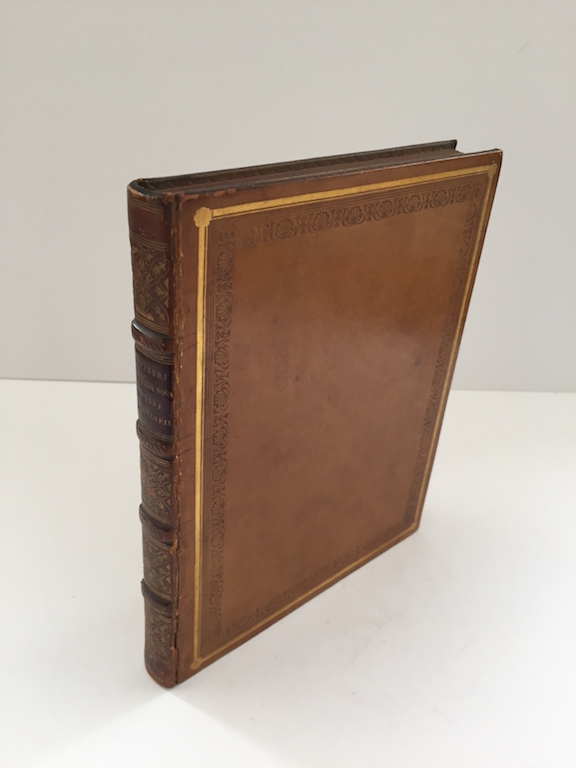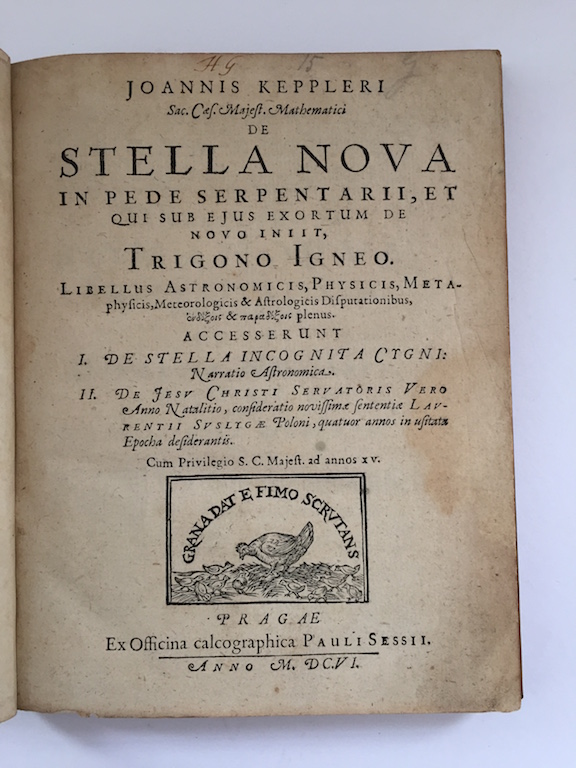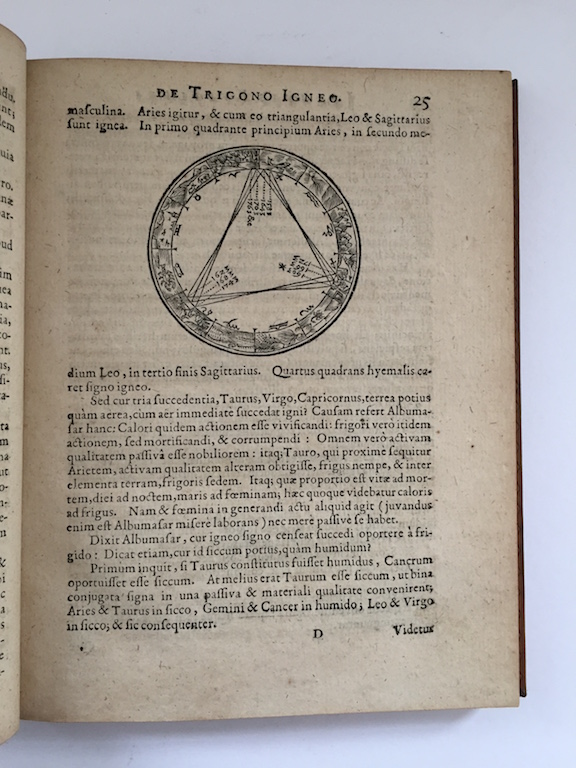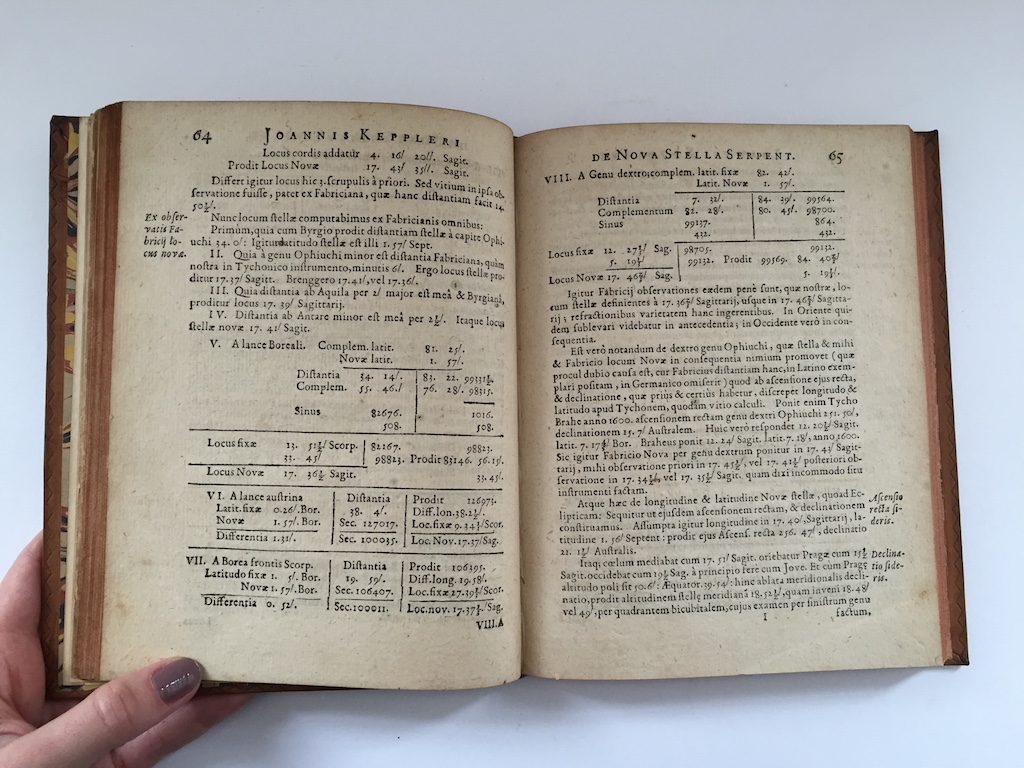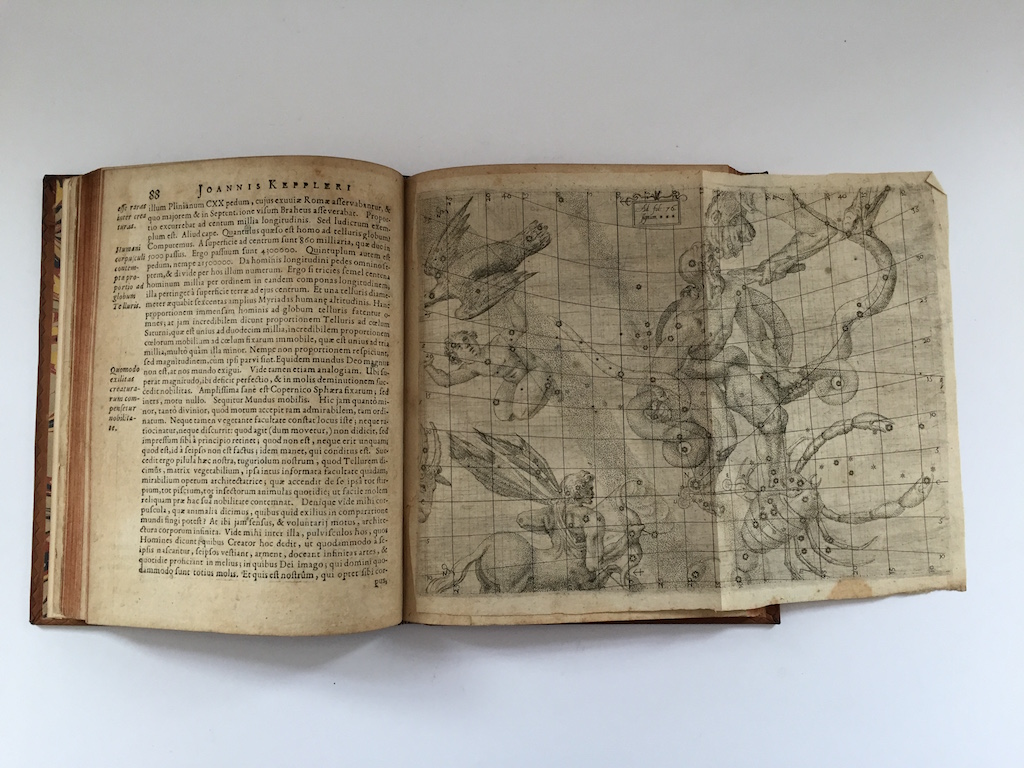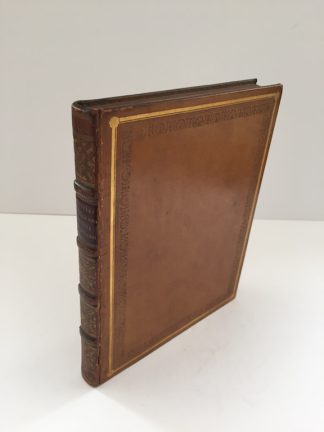KEPLER, Johannes
De stella nova ... De stella tertii honoris in cygno ... De Jesu Christi servatoris nostri vero anno natalitio
Prague (and) Frankfurt, Pavel Sessius (and) Wolfgang Richter, 1606£40,000.00
FIRST EDITION. 4to, 4 parts in one volume, pp. [12], 212, 35, [5], wanting final blank. Predominantly Roman letter, little Italic and Greek; four separate title-pages, woodcut printer’s device on first, neat double-page engraved plate and several diagrams; very light browning throughout, small damp and rust stain to margins of very few ll. A good copy in early nineteenth-century calf, gilt panel and blind-tooled roll of interlacing flowers; a.e.r; corners slightly chipped. Contemporary inscriptions on front fly, including title, author owner’s inscription ‘John M ….’ in an English hand written over; early monogram ‘H G’ on head of title.
First edition of Kepler’s detailed essays describing the supernova which appeared at the foot of the costellation Ophiucus in 1604. Johann Kepler (1571-1630) is one of the most important modern astronomers and mathematicians, along with his teacher Tycho Brahe and Galileo Galileo. Working at the court of the Emperor Rudolph II in Prague, he was able to improve the refracting telescope and formulate the fundamental laws of planetary motion correcting Copernicus. This invaluable account provides information on the supernova’s colour, brightness, distance to the earth as well as other events related to this still unsolved astronomical phenomenon announcing the death of a star. The supernova was the last to be seen in the Milky Way and was named after Kepler in the 1940s.
Its appearance revived the debate among scholars on whether the incorruptibility of the cosmos established by Aristotle was valid or not. For instance, Galileo delivered a lecture on the supernova, considering it as disproof of the Aristotelian theory. In 1604, Kepler was observing the conjunction of Jupiter with Saturn, an event which he calculated to happen exactly every 800 years. On October 10, Kepler witnessed the supernova and assumed the two phenomena were related. While working on his scientific description, he came across the essay of the Polish astronomer Laurence Suslyga, who had argued that Christ had been born in 4 BC on the basis of other celestial calculations. On this account, Kepler concluded that 1600 years earlier (i.e. 4 BC) the Jupiter-Saturn conjunction had provoked another supernova, which had been recorded in the Gospel and it is known as the Christmas Star or Star of Bethlehem. Such a theory is set out in the fourth part of this remarkable collection of treatises.
This editio princeps has two variants, depending on the presence of the imprint ‘impensis Authoris’ in the main title. Although a definitive priority has not been established, Kepler’s letters seem to suggest that the present title page is the earlier. Kepler was probably dissatisfied with the quality of this first print-run and paid for another. The presentation copy to James I in BL was from the second printing.
Graesse, IV, 11; Caspar, 27; Cantamessa, 2289; Cinti, 17; Houzeau & Lancaster, 2843; Zinner, 4097; DSB: ‘A monument of its time.’In stock


